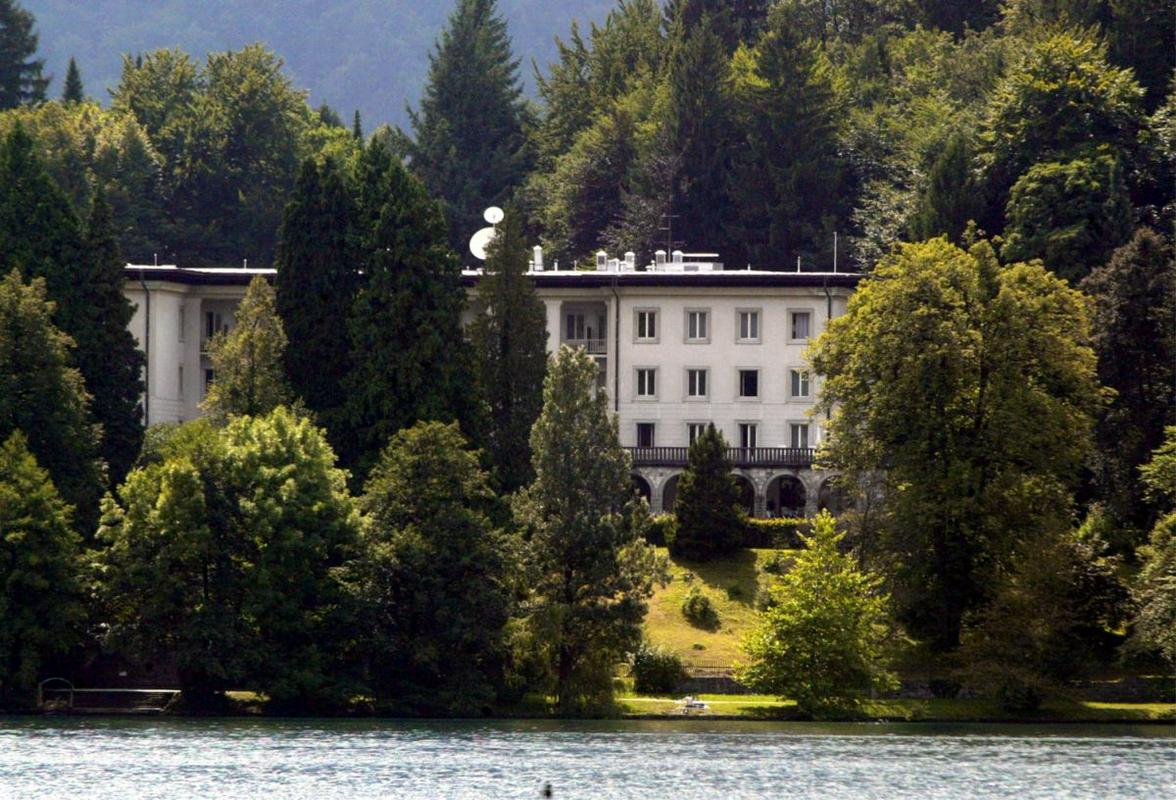
Many visitors to Slovenia’s Lake Bled notice a palatial villa surrounded by a park that appears to be fit for a king. Villa Bled, as the building is known, is now empty, but it once really was the playground of royalty.
Before World War II, Villa Bled was the summer residence of Yugoslavia’s Karađorđević royal family. The family would move to Bled to escape from the stifling summer heat of Belgrade. It was the time of cosmopolitan glamor in Bled, and it was at Vila Bled where the Yugoslav Royals hosted their high-profile foreign guests. The residents of led were captivated to see international nobility on the streets of their home town.
After World War II, the original villa was demolished and replaced by a more modernist mansion. However, its role remained essentially unchanged: The new Villa Bled served as Marshall Tito’s summer residence. Tito spent the summer months in Bled, and during that time, the entire diplomatic corps moved from Belgrade to Bled. Foreign ambassadors opened temporary embassies in the resort town, which functioned as Yugoslavia’s de facto capital for several weeks.
Tito also continued the Royals’ tradition of receiving high guest at Villa Bled, even though personalities of the Communist East and the Non-Aligned Third World now dominated the guest list: Ceausescu of Romania, Nasser of Egypt, the Kims of Korea, King Hussein of Jordan, and so on. For Tito, Bled was a picturesque showcase of his socialist Yugoslavia. Even drunks were removed from the vicinity of the villa during foreign visits so they wouldn’t disturb the image of a prosperous and orderly Yugoslav state.
After Tito’s death and the collapse of Communism, Villa Bled became a luxury hotel. A member of the prestigious French-based Relais & Châteaux association, the hotel attracted guests from around the world. They could admire the property’s magnificent parks, previously open only to royalty (blue-blooded and Communist alike) or even take a swim from the hotel’s private deck on the lake.
The interior of the villa remained a time capsule. All of the furniture and fitting were preserved exactly as they were in Tito’s day. This lent the hotel a considerable amount of fifties charm. Lovers of early modernism (Communist-style) flocked to the hotel even before design hotels became fashionable. Villa Bled was even featured in books about hotel design.
However, a period of mismanagement and a lack investment forced the hotel to shut its doors in 2012. The building is energy inefficient and in need of intensive renovations. But because it only has a few rooms, few investors are prepared to tackle the challenge of updating it for the 21st century. The state, which owns the property and had rented it out to various private investors, isn’t sure exactly what to do with the storied villa. It currently operates it as a building for state ceremonies, but it has yet to come up with any long-range plans.
After welcoming foreign guests for almost a century, Villa Bled now stands empty and awaits a better tomorrow. One day, it may once again become the pride of Slovenia’s most famous tourist destination.

































































